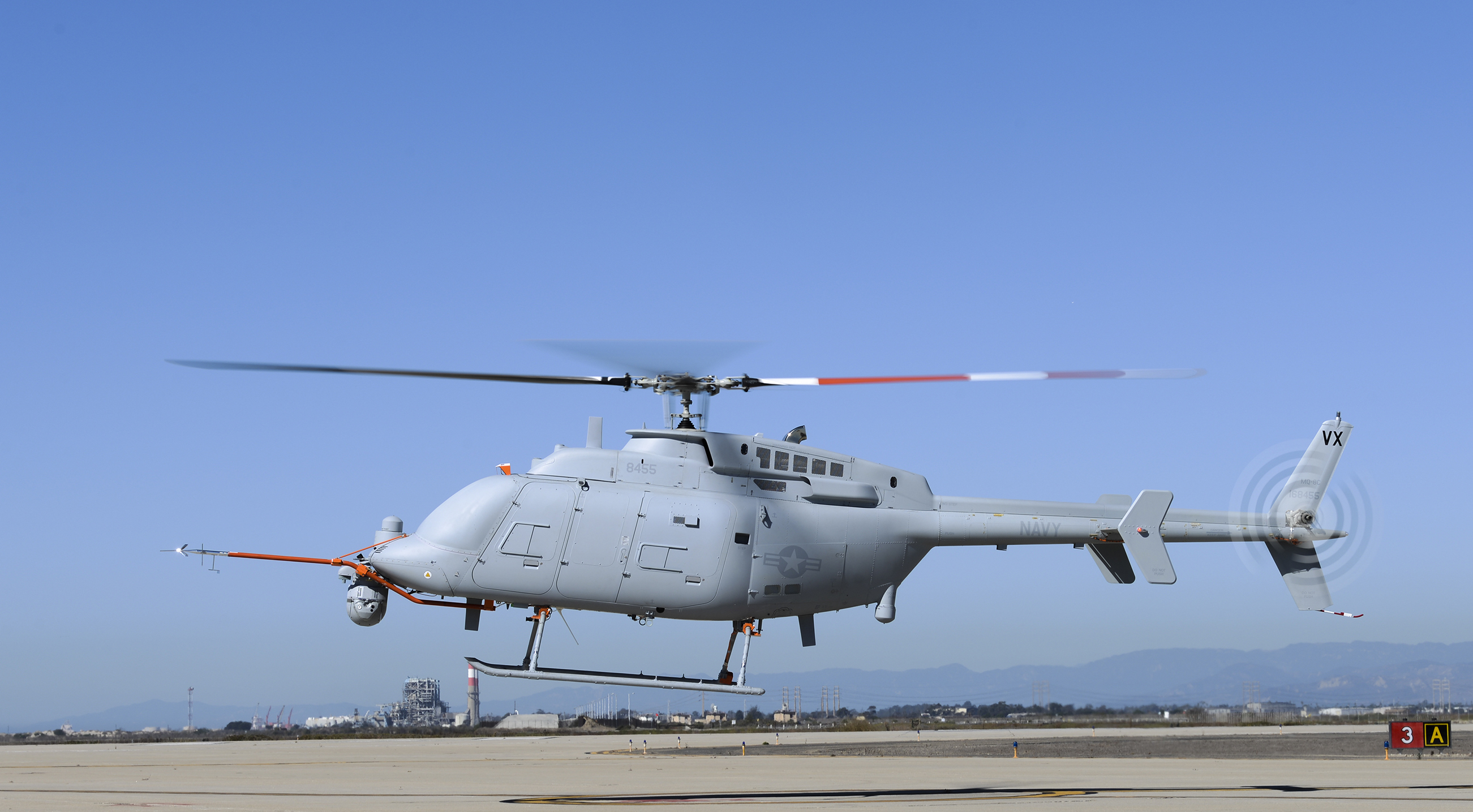
In the next 15 to 25 years it is not unreasonable to imagine that unmanned helicopter drones will be shuttling people and parts from shore-to-sea for routine non-tactical resupply missions.
Today unmanned helicopters are finding expanded roles in jobs that prove to be too dirty, dull, or dangerous for manned helicopter crews, said Cmdr. Brian Reardon, PMA-266, head of the MQ-8 Fire Scout program. The smaller MQ-8B Fire Scout recently passed 11,000 hours of operational flight and has more than proved its ability to perform intelligence, surveillance, and reconnaissance (ISR); mine countermeasures; and anti-submarine warfare with a high degree of quality and reliability.
Reardon provided a detailed update on the Fire Scout at the Naval Helicopter Association 2014, held in Norfolk May 12 to 15. The operationally fielded MQ-8B and C models are fully autonomous systems that are not flown by a pilot with a joystick on the ground; rather, the aircraft are controlled through the entering of fly-to points and parameters relayed via two way data links that provide flight inputs and receive ISR feeds from the drones.
Reardon offered a recent example of what these unmanned systems are able to provide to the Fleet, noting that last week the forward-deployed USS Elrod (FFG-55), cycled its two MQ-8B birds for 17 flight hours in a single day.

That type of persistent surveillance coverage is currently in high demand for Special Operations Forces and counterpiracy operations in U.S. Africa Command and U.S. Central Command. The Fire Scouts currently are integrated into the littoral combat ship architecture, and are also being employed on the few remaining Oliver Hazard Perry-class frigates.
As more unmanned rotor wing systems mature and proliferate they will soon have a part on any surface platform with a helo pad and the requisite shipboard command, control and communication systems to control and exploit collected data. Reardon added that in addition to exploitation onboard the hosting ship, MQ-8 data is, in some situations, being piped real-time via satellite to exploitation sites in the United States.
The smaller MQ-8B models will soon be augmented, and eventually replaced by the larger MQ-8C model. The Navy has recently contracted to purchase seventeen of the MQ-8C airframes.
The larger C model is built on a Bell-407 airframe. By lightening the aircraft with the removal of the crew and associated survival equipment, the MQ-8C has a 12-hour unrefueled endurance.
Composite squadrons of manned and unmanned aircraft are now deploying on the same ships in the Fleet. As one experienced SH-60R pilot said, “During the oh-dark-30 hours, when manned crews have to contend with fatigue and night operations, it is a lot safer to have the Fire Scout airborne providing an ISR screen for the surface action group.”
The Fire Scouts soon will be adding the RDR-1700B radar that is capable of surface search, inverse, and synthetic aperture radar modes. Also, the C model will soon be certified to carry forward-firing weapons, such as the LAU-153. Those added capabilities will provide for a complete find, fix, and finish capability for the drones.
Also present at NHA 2014 was Sikorsky’s X2. The world record-holder for the fastest helicopter (263 knots) was moved into the Norfolk convention center and will soon be transferred to the Smithsonian’s Air and Space Museum to takes its place in aircraft history.
The aircraft is being used as a test platform to help design and develop a whole new generation of rotary wing craft. Sikorsky and Boeing currently are building a 25,000 pound (roughly the size of a Black Hawk) demonstrator—the SB-1 Defiant. That should be operational in a few years.
Defiant will incorporate a great deal of the X2 technology and will be among other industry entries lining up to compete for the follow-on to the current line of rotor wing aircraft.
Most interesting is the plan to incorporate a selectable autonomy function into the next-generation platform. That capability will allow the aircraft to be fully manned, partially manned, or completely unmanned.

Not surprisingly, that rapidly evolving area of naval aviation is having an impact on the pilots, aircrews, and support personnel in the naval helicopter community.
As with their introduction into previous mission areas, the drones are seen as a threat to job security, but even the most junior helicopter aircraft commander who deploys side by side with a Fire Scout can grasp the advantages. Letting the robots do the dirty, dull, and dangerous missions, while manned crews pick up the complex tactical mission sorties, will allow the Navy to use the best of both platforms for the foreseeable future.




